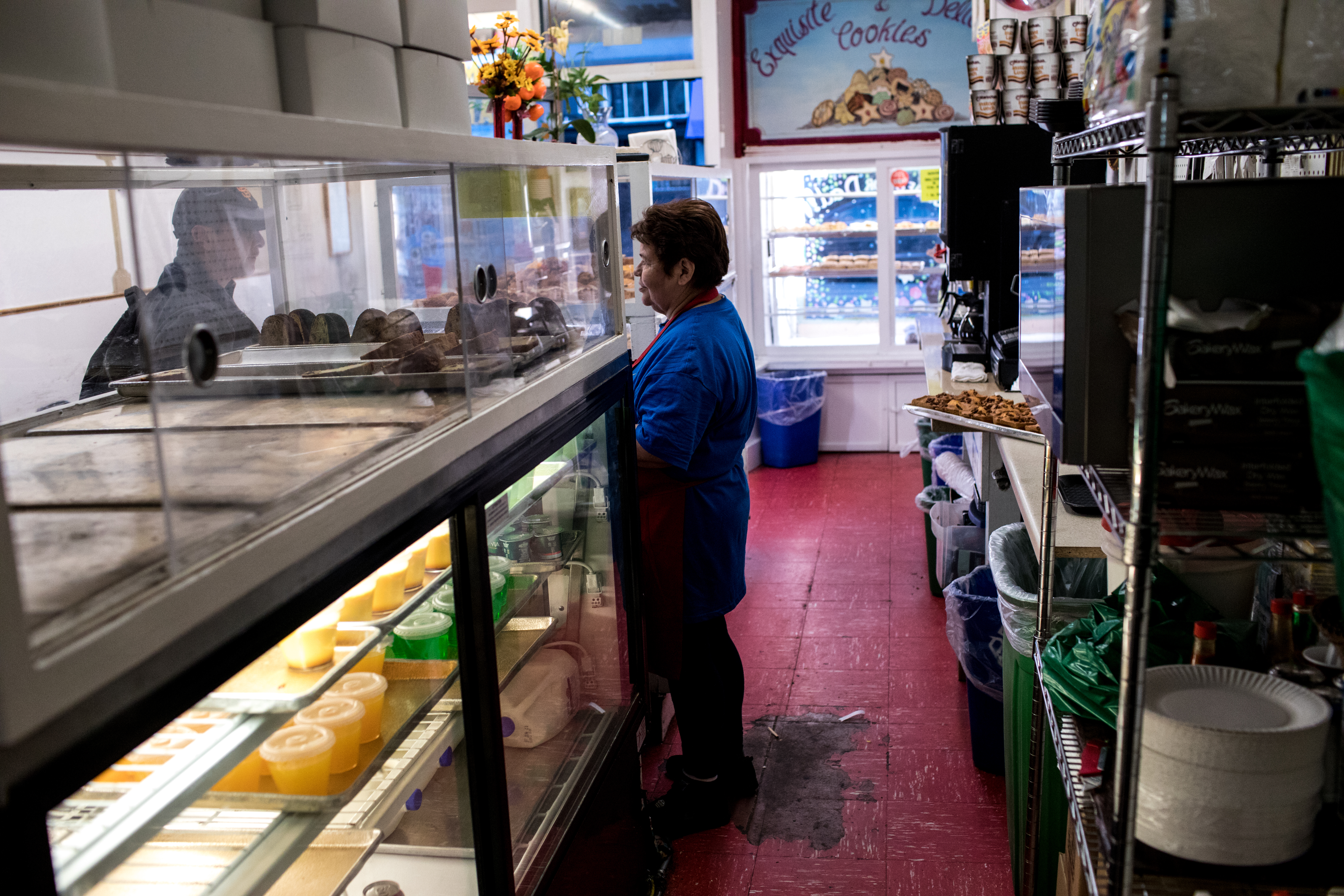
(C)
STORY INTRO:
The smells of traditional Mexican sweet bread, coffee brewing and tamales warming up attract a steady line of early morning customers on their way to work. Many of them have been regulars of the bakery for several yearsÑfor them it is a place where everyone is treated like family.
Her grandfather learned to bake, he taught her dad the same skills and she opened up her own bakery as a tribute. In 1993, Carmen Elias opened up La Mejor Bakery in San FranciscoÕs Mission District cultivating lasting relationships with everyone that walked through her doors.
ÒThere was nobody in this area open early and nobody open late,Ó said Elias, 63, as she explained the first two years of the bakeryÕs opening. ÒSo the first thing I decided was that the customers need to know me.Ó
Elias joins her staff at work helping run front of house operations with a team of women while bread is baked in the back, at times with the help of her brother and her son. After 25 years of business, the bakery has become rooted in the community and resistant to the cityÕs wave of gentrification that has forced other long-time local businesses away. Customer loyalty built on relationships with the bakery staff is what holds it all together.
Family, as explained by Elias, is the main symbol embedded in the bakeryÕs culture and history. Even if you canÕt afford to pay for a cup of coffee or a small piece of bread, youÕre taken cared of.
ÒItÕs like a big family,Ó said employee Miriam Huerta, 57, in Spanish. ÒEverybody knows each other.Ó
CAPTION:
Miriam Huerta, 57, speaks to an early morning customer at La Mejor Bakery in San Francisco, Calif., Monday, June 4, 2018.
Located in the heart of San Francisco’s Mission District, the business has rooted itself within the neighborhood, resisting a changing city landscape and exodus by gentrification.

